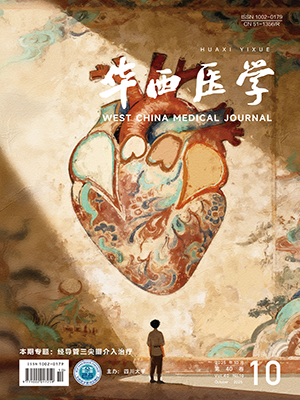| 1. |
蔡广研, 陈香美. 慢性肾脏病并发症治疗现状及思考[J]. 中国实用内科杂志, 2010, 30(2) : 102-103.
|
| 2. |
中华人民共和国卫生部. 卫生部办公厅关于印发肾脏内科专业 4个临床路径的通知[EB/OL]. (2009-12-11) [2010-01-01]. http://www.nhfpc.gov.cn/zhuzhan/wsbmgz/201304/1730f243b3254c99862c975ac384d695.shtml.
|
| 3. |
刘红, 方艺, 许迅辉, 等. 2444例肾活检临床病理分析[J]. 中国临床医学, 2010, 17(4) : 535-539.
|
| 4. |
陈惠萍, 曾彩虹, 胡伟新, 等. 10594例肾活检病理资料分析[J]. 肾脏病与透析肾移植杂志, 2000, 9(6) : 501-509.
|
| 5. |
史晓虎, 李文歌, 杨冠男, 等. 肾病综合征的疾病构成: 单中心临床研究[J]. 中日友好医院学报, 2012, 26(4) : 195-198.
|
| 6. |
杨桢华, 刘倩, 伍巧源, 等. 老年原发性肾小球疾病患者的肾脏病理与临床特征[J]. 广西医科大学学报, 2012, 29(4) : 571-572.
|
| 7. |
Saito T, Sato K. Lipoprotein glumerulopathy:glomerular lipoprotein thrombi in a patient with hyperlipoproteinemia[J]. Am J Kidney Dis, 1989, 13(2) : 148-153.
|
| 8. |
龚如军, 刘志红, 陈朝红, 等. 载脂蛋白E及其基因变异在脂蛋白肾病发病中的作用[J]. 肾脏病与透析肾移植杂志, 2001, 10(4) : 329-334.
|
| 9. |
Pham T, Kodvawala A, Hui DY. The receptor binding domain of apolipoprotein E is responsible for its antioxidant activity[J]. Biochemistry, 2005, 44(20) : 7577-7582.
|
| 10. |
贺西南, 向少伟. 脂蛋白肾病的研究现状[J]. 中国中西医结合肾病杂志, 2007, 8(7) : 433-434.
|
| 11. |
Arakawa M, Fueki H, Hirano H, et al. Idiopathic mesangiodegenerative glomerulopathy:a proposal of new disease entity[J]. Nichi-Jin-Shi (Japanese), 1979, 121(5) : 914-915.
|
| 12. |
Ikeda K, Yokoyama H, Tomosugi N, et al. Primary glomerular fibrosis: a new nephropathy caused by diffuse intra-glomerular increase in atypical type Ⅲ collagen fibers[J]. Clin Nephrol, 1990, 33(4) : 155-159.
|
| 13. |
陈楠, 徐耀文, 潘晓霞, 等. 胶原Ⅲ肾小球病家系报道[J]. 中华肾脏病杂志, 2005, 21(11) : 645-648.
|
| 14. |
周福德, 邹万忠, 黄朝兴, 等. 胶原Ⅲ肾小球病(附二例报告)[J]. 中华肾脏病杂志, 1998, 14(2) : 4-7.
|
| 15. |
李玲, 邹万忠, 王素霞, 等. Ⅲ型胶原肾小球病的形态学观察[J]. 中华病理学杂志, 2005, 34(7) : 385-388.
|
| 16. |
陈芳, 吕吟秋, 陈波, 等. Ⅲ型胶原肾小球病二例[J]. 中华肾脏病杂志, 2012, 28(8) : 663.
|
| 17. |
Hisakawa N, Yasdoka N, Nishiya K, et al. Collagenofibrotic glomerulonephropathy associated with immune complex deposits[J]. Am J Nephrol, 1998, 18(2) : 134-141.
|
| 18. |
Naruse K, lto H, Moriki T, et al. Mesangial cell activation in the collagenofibrotic glomerulonephropathy. Case report and review of the literature[J]. Virchows Arch, 1998, 433(2) : 183-188.
|
| 19. |
Ordonez NC, Rosai J. Urinary tract[M]//Rosai J, Ackerman L. Surgical pathology. 9 th ed. London: Mosby, 2004: 1218-1219.
|
| 20. |
Iskandar SS, Herrera GA. Glomerulopathies with organized deposits[J]. Semin Diagn Pathol, 2002, 19(3) : 116-132.
|
| 21. |
Vogt BA, Wyatt RJ, Burke BA, et al. Inherited factor H deficiency and collagen type Ⅲ glomerulopathy[J]. Pediatr Nephrol, 1995, 9(1) : 11-15.
|




